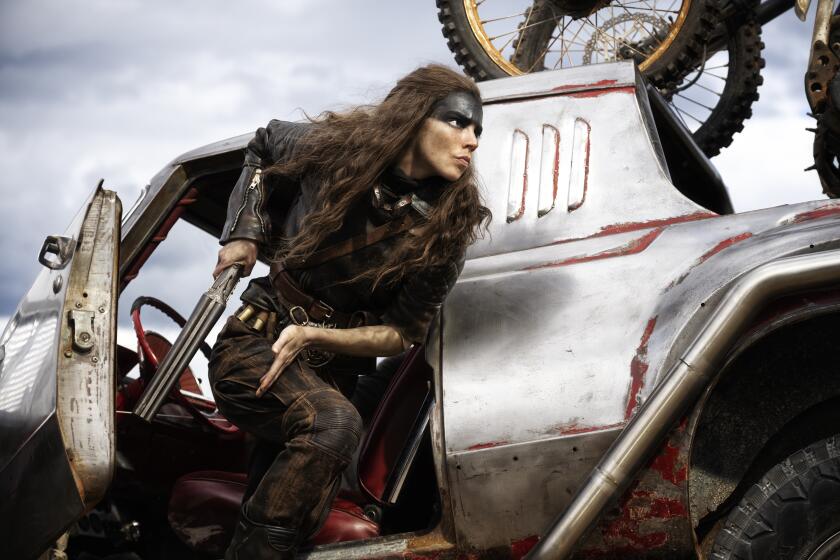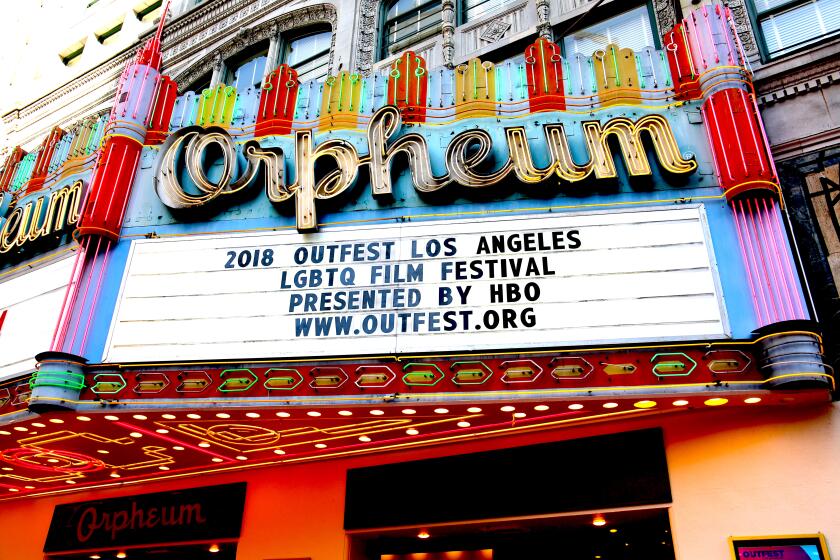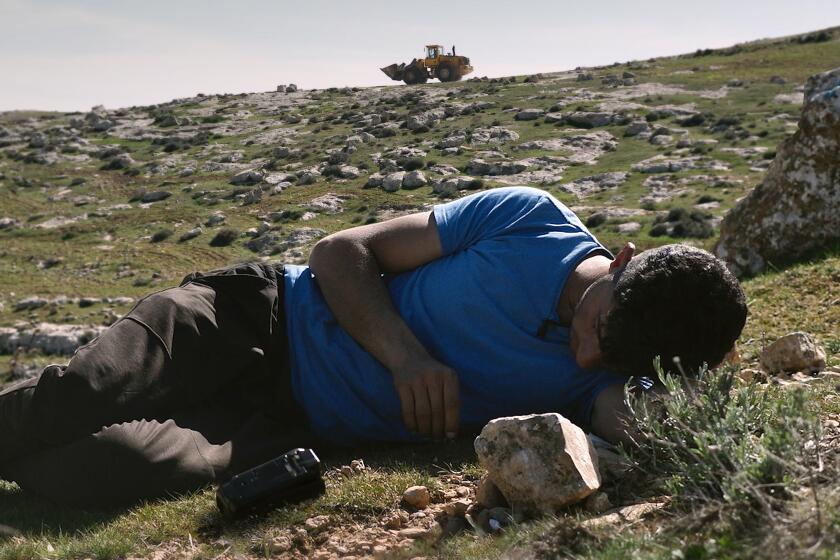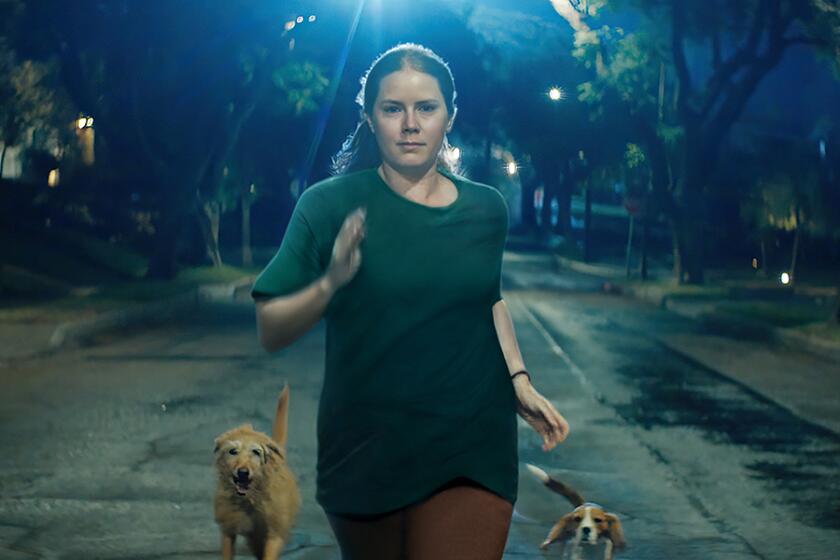Cannes: Coppola’s Roman candle ‘Megalopolis’ is juicy and weird
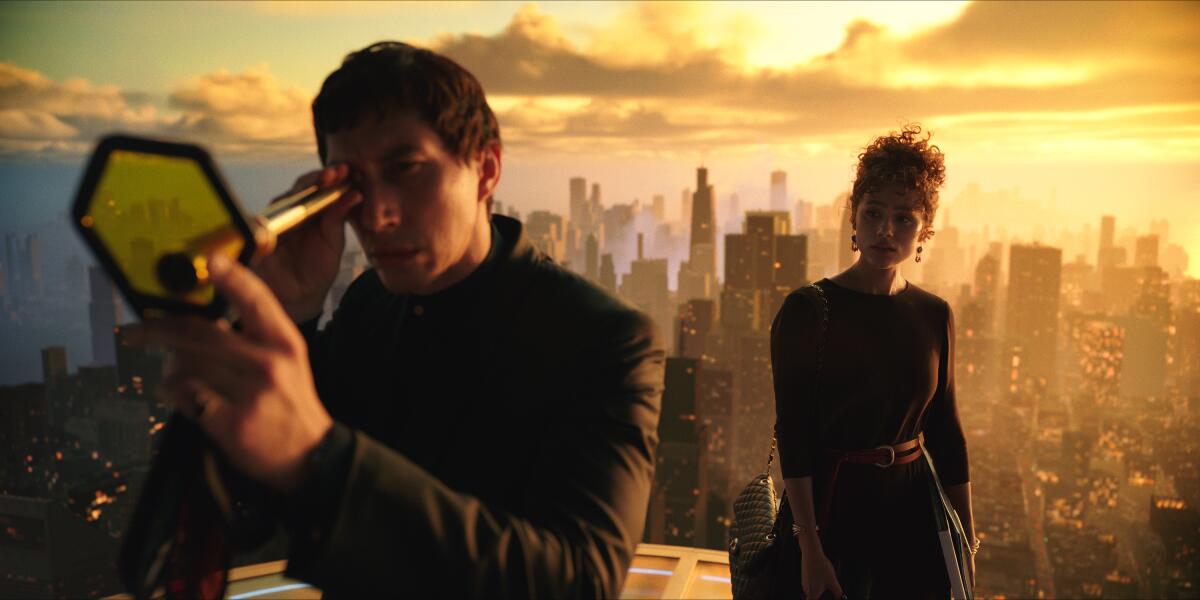
- Share via
CANNES, France — It was here at Cannes, 45 years ago, that Francis Ford Coppola finally emerged from his wilderness of making “Apocalypse Now” with a work in progress, the finish line in sight. That press conference is immortalized in “Hearts of Darkness: A Filmmaker’s Apocalypse,” the massively entertaining 1991 documentary by Coppola’s wife, Eleanor, in which the “Godfather” director is seen to declare, “My film is not a movie about Vietnam — it is Vietnam.”
It’s an almost mythological moment for cinema, one that encompasses vindication (“Apocalypse Now” would go on to win the Palme d’Or) but also the end of Coppola’s grand run during the 1970s and the cementing of a reputation that would hound him, one of grandiloquence, artistic risk, overruns and indulgence.
That’s close to where he finds himself right now with “Megalopolis,” the wildly ambitious, overstuffed city epic funded with $120 million of his own money, that had its world premiere tonight at a festival that’s been good to the filmmaker.
The first film for the 85-year-old Coppola since his 2011 horror bauble “Twixt,” “Megalopolis,” a personal obsession of the director’s since at least the 1980s, invites words like “summation” and “capstone.” But those do it a disservice (as did some leaked reactions from an early distributor’s screening), especially if you’re expecting something burnished and high-toned. It may be more productive — at least through these eyes — to see it as fluky and impressionistic, closer to Tom Wolfe’s “The Bonfire of the Vanities,” a funhouse image of a clashing New York City riven by money, power and race.
But don’t call it New York (nobody does in the film). It’s more a New Rome, one with its own Chrysler Building, Grand Central Terminal and Art Deco flourishes but recast through an ancient lens — and the stentorian narrative tones of Laurence Fishburne — as a variation on a city in decline.
In expanding the story of Furiosa (Anya Taylor-Joy), director George Miller still creates entertaining, pounding action — but loses the forward momentum on which the franchise is based.
It will be a point of contention how much insight is actually to be gleaned from Coppola’s faux-Roman refocusing. Decadence in his city still looks similar to what you’d expect elsewhere, not to mention a touch retrograde: young women squirming and doing drugs in dance clubs (the movie does a bit of ogling), smirking journalists who still wear hats with press cards stuffed in the rim.
And if the central showdown is technically Roman history rethought as sci-fi urban drama — I’ll spare you the wormhole of exploring the Catilinarian coup d’état that seems to have fixated the director for years — we’re basically looking at a power triangle between Cesar Catilina (Adam Driver, fuzzy in yet another cryptic visionary role that doesn’t suit him), an imperious inventor in the master-builder mold of Robert Moses; Franklyn Cicero (Giancarlo Esposito), the city’s besieged David Dinkins-like mayor; and Cicero’s daughter, Julia (Nathalie Emmanuel), whose allegiances toggle between the two.
“Megalopolis” doesn’t work like “Succession” or a municipal showdown like James Gray’s expertly rendered “The Yards” did; its details are too divorced from reality for any of its machinations to take hold in a suspenseful way. Coppola’s original screenplay, the product of years of revision and still subjected to much improvisation, swings manically between clunky dialogue and classic quotations. At one point I was watching Driver deliver the entire “to be or not to be” soliloquy from “Hamlet,” a reference never acknowledged by any of the other characters. As they say, it’s a choice.
And while sumptuously costumed in a muted style by Coppola’s longtime genius collaborator Milena Canonero (“The Cotton Club,” “Tucker: The Man and His Dream”), the movie lacks the confidence of a cinematographer who could organize its ideas into a larger, classier whole, as the director had in Gordon Willis on all three “Godfather” films. (Here the photography is by Mihai Mălaimare Jr., a veteran of Paul Thomas Anderson’s “The Master,” who hangs on for dear life.)
But once you let go of the understandable dream of Coppola returning with another masterpiece, there is much to enjoy in “Megalopolis,” especially its cast members, leaning into their moments with an abandon that was probably a job requirement. Aubrey Plaza not only plays a character named Wow Platinum, a salacious interviewer looking to marry into wealth, but somehow frees herself of any embarrassment while doing so. Peppery notes from Talia Shire and Jon Voight intermingle with athletic overacting by Shia LaBeouf and Dustin Hoffman.
In a larger sense, Coppola has moved from the cynicism of his greatest films like “The Conversation” and “Apocalypse Now” — so much power doing so much corrupting — and into something that could fairly be called utopian. I’m not sure if that’s what I want from him as an artist, but I thrill to his unbowed aspiration. He’s going out not with something tame and manicured but with an overstuffed, vigorous, seething story about the roots of fascism that only an uncharitable viewer would call a catastrophe. Rather, it feels like a city. It may be the most radical film he’s ever done. He dedicates it to his late wife, who would have smiled at the evidence of her husband still doing his thing 45 years later.
'Megalopolis'
Rating: R, for sexual content, nudity, drug use, language and some violence
Running time: 2 hours, 18 minutes
Playing: In wide release Friday, Sept. 27
More to Read
Only good movies
Get the Indie Focus newsletter, Mark Olsen's weekly guide to the world of cinema.
You may occasionally receive promotional content from the Los Angeles Times.
